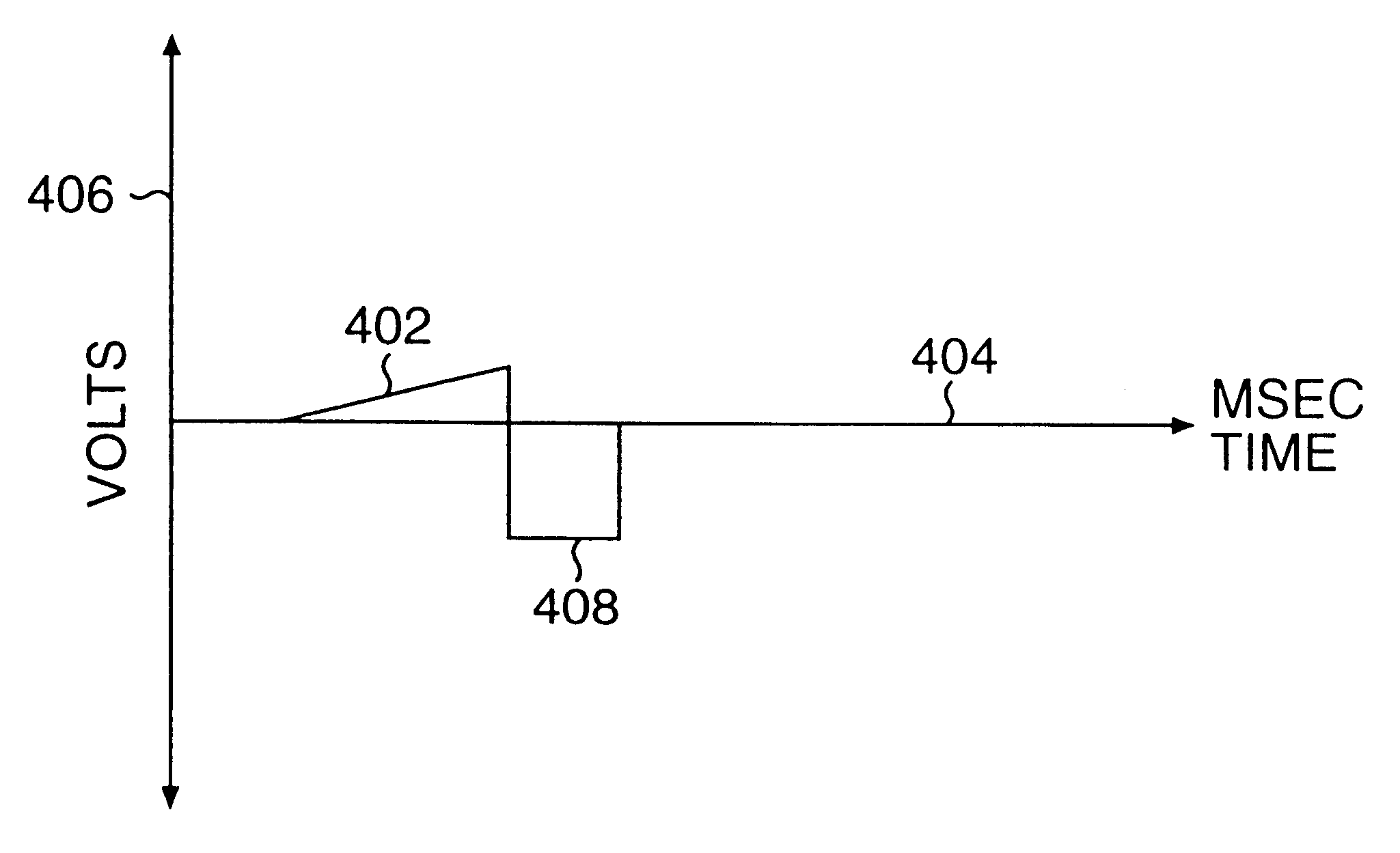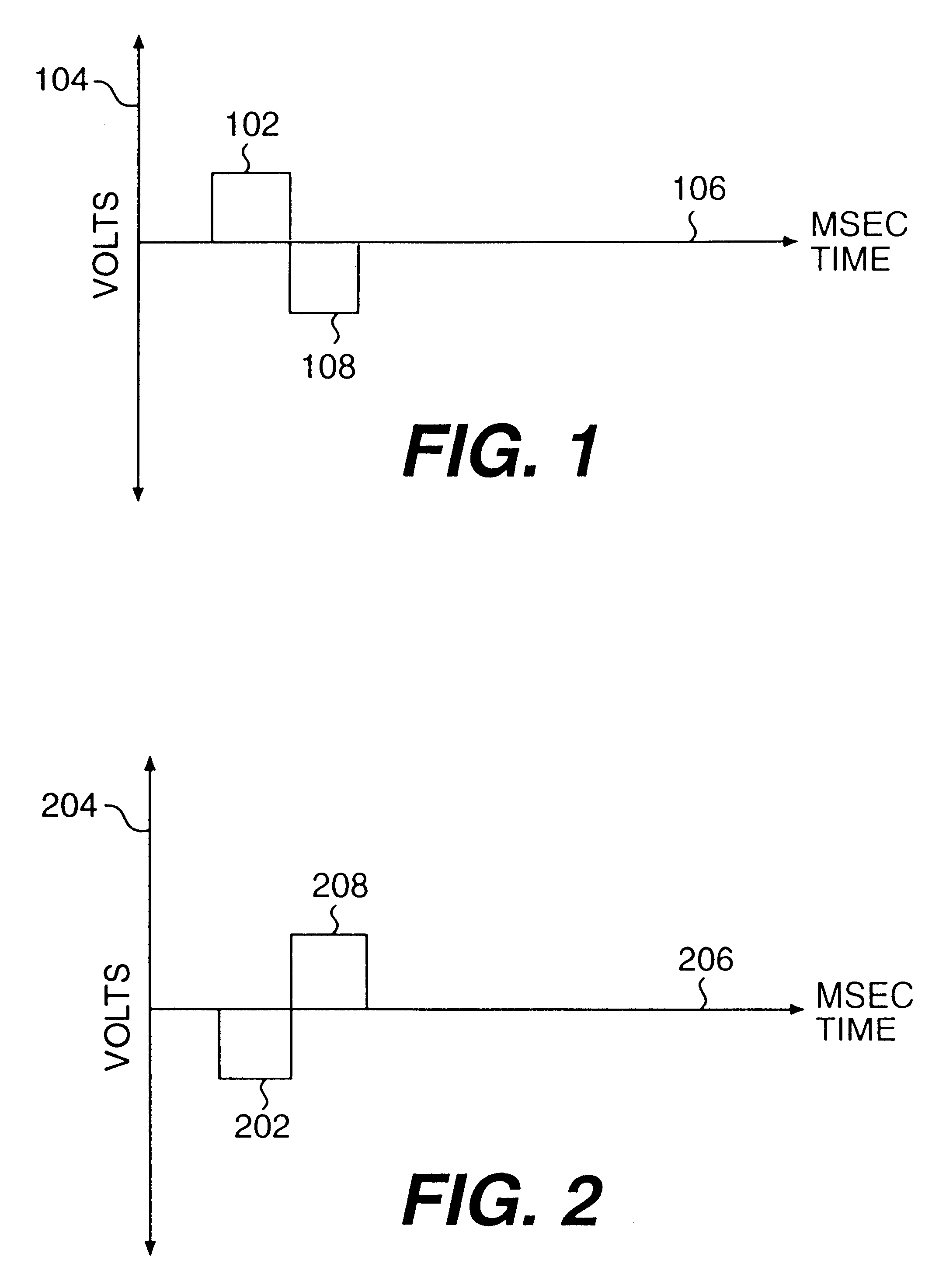Augmentation of muscle contractility by biphasic stimulation
a biphasic waveform and muscle tissue technology, applied in the field of muscle tissue stimulation, can solve the problems of affecting so as to improve the electrical stimulation of muscle tissue
- Summary
- Abstract
- Description
- Claims
- Application Information
AI Technical Summary
Benefits of technology
Problems solved by technology
Method used
Image
Examples
example 1
Stimulation and propagation characteristics of the myocardium were studied in isolated hearts using pulses of differing polarities and phases. The experiments were carried out in five isolated Langendorff perfused rabbit hearts. Conduction velocity on the epicardium was measured using an array of bipolar electrodes. Measurements were made between six millimeters and nine millimeters from the stimulation site. Transmembrane potential was recorded using a floating intracellular microelectrode. The following protocols were examined: monophasic cathodal pulse, monophasic anodal pulse, leading cathodal biphasic pulse, and leading anodal biphasic pulse.
Table 1 discloses the conduction speed transverse to fiber direction for each stimulation protocol administered, with stimulations of three, four and five volts and two millisecond pulse duration.
TABLE 1 Conduction Speed Transverse to Fiber Direction, 2 msec duration 3 V 4 V 5 V Cathodal 18.9 .+-. 2.5 cm / sec 21.4 .+-. 2.6 cm / sec 23.3 .+-. 3...
example 2
The effects of varying pacing protocols on cardiac electrophysiology were analyzed using Langendorff prepared isolated rabbit hearts. Stimulation was applied to the heart at a constant voltage rectangular pulse. The following protocols were examined: monophasic anodal pulse, monophasic cathodal pulse, leading anodal biphasic pulse, and leading cathodal biphasic pulse. Administered voltage was increased in one volt steps from one to five volts for both anodal and cathodal stimulation. Duration was increased in two millisecond steps from two to ten milliseconds. Epicardial conduction velocities were measured along and transverse to the left ventricular fiber direction at a distance between three to six millimeters from the left ventricular free wall. FIGS. 6 and 7 depict the effects of stimulation pulse duration and the protocol of stimulation administered on the conduction velocities.
FIG. 6 depicts the velocities measured between three millimeters and six millimeters transverse to th...
PUM
 Login to View More
Login to View More Abstract
Description
Claims
Application Information
 Login to View More
Login to View More - R&D
- Intellectual Property
- Life Sciences
- Materials
- Tech Scout
- Unparalleled Data Quality
- Higher Quality Content
- 60% Fewer Hallucinations
Browse by: Latest US Patents, China's latest patents, Technical Efficacy Thesaurus, Application Domain, Technology Topic, Popular Technical Reports.
© 2025 PatSnap. All rights reserved.Legal|Privacy policy|Modern Slavery Act Transparency Statement|Sitemap|About US| Contact US: help@patsnap.com



